|
BULB LOG 20 --- 17th May 06
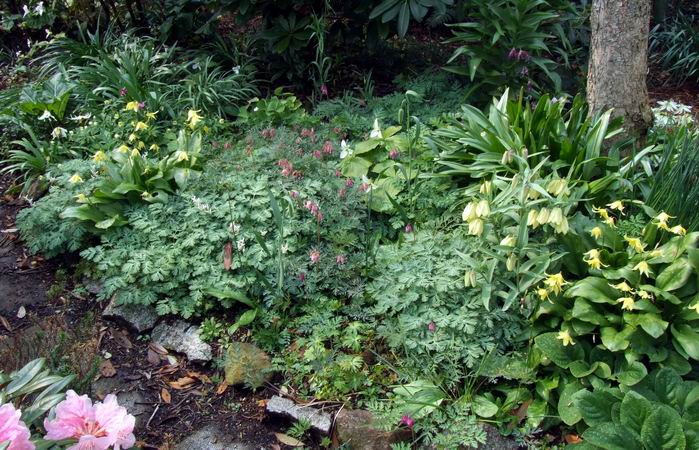
Tapestry planting
One of my favourite areas at the moment is this mixed planting where the foliage looks like a green carpet of form and texture with flowers over the top.
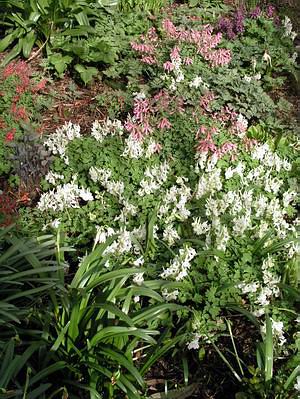
Same bed with corydalis
This is the same bed a month or so ago when it was a tapestry of corydalis, these have died down now and have been replaced with dicentra.
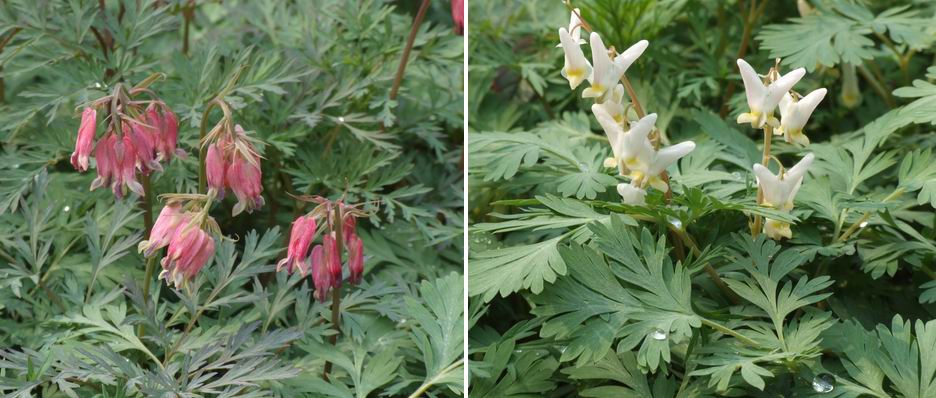
Dicentra spectabilis and cucullaria
Originally we planted Dicentra 'Stuart Boothman' which has a finely dissected leaf and dark purple red flowers. Boothmans is a cultivar of the species D. spectabilis which can be a real thug in the right conditions; spreading rapidly in moist humus rich soils. While Boothmans is less invasive it has spread both by the creeping rhizome and it has self seeded around to form a good mass. The seedlings vary considerably in vigour and leaf form. I pull out those that revert back towards normal spectabilis, these also tend to be more vigorous than I want, and allow the more dissected leaf forms to remain. The grey green leaves of Dicentra cucullaria harmonise beautifully in this mix as do its white flowers. Dicentra cucullaria forms bulbs covered in rice grains, not unlike some of the North Americam fritillaria, and they slowly form good clumps. You can greatly increase your stock by rubbing off the rice grains when the plant goes dormant and growing them on separately, like seedlings - they can reach flowering s
ize in two years.
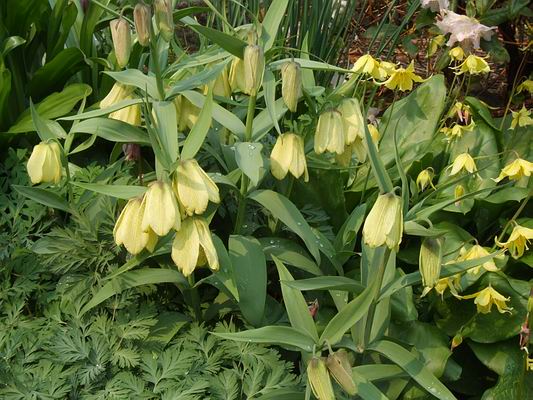
Fritillaria pallidiflora
Various bulbs such as Fritillaria pallidiflora grow happily through this green tapestry giving a very pleasing effect. I much prefer Fritillaria pallidiflora in the garden, we do have some in pots but it is one of the larger frits that I think looks much more at home in the garden.
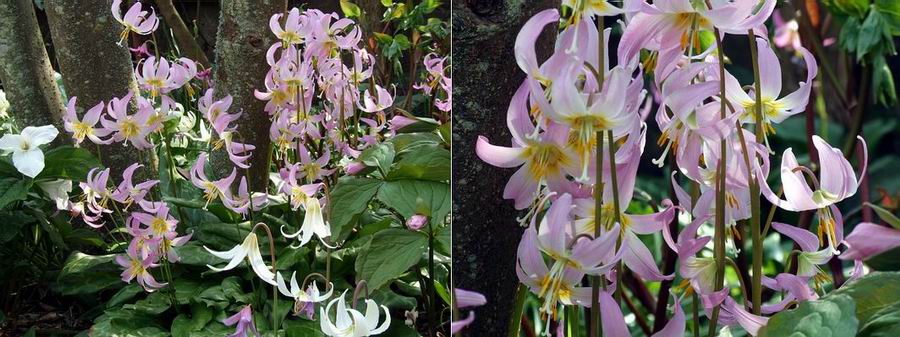
Erythronium Craigton Cover Girl
I have a few more Erythronium hybrids to show you this week - firstly my own 'Craigton Cover Girl' which has formed quite a substantial clump at the base of a laburnum tree. It is almost impossible to lift and split this clump because of the laburnum roots so I also grow Erythronium 'Craigton Cover Girl' in fish box troughs which can be tipped out every year or two to speed up the rate of increase, there are so many people wanting to get hold of it.
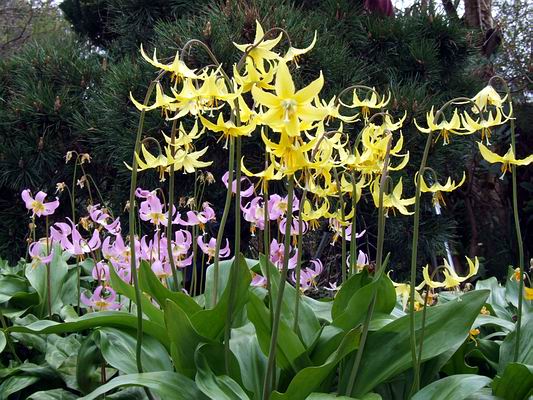
Erythronium Susannah
Erythronium Susannah is my favourite of the E. Tuolumnense hybrids but unfortunately it is also still quite scarce and not often available for sale as yet.
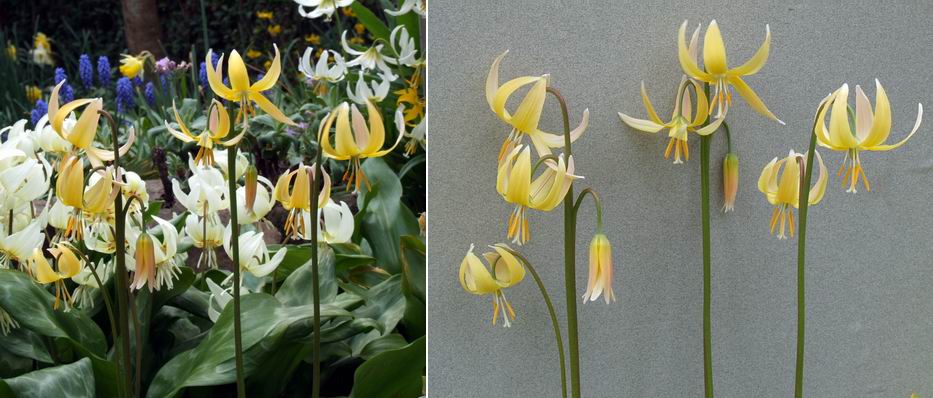
Erythronium Joanna
Likewise Erythronium Joanna which I only got a few years ago from John Amand, whose daughter it is named after. I am growing this bulb in a plunge basket in the sand bed so I can repot it every year. This is the quickest way to increase these hybrids as they grow on better if the compost is refreshed each year and, by separating the small offsets from the bigger bulbs, they also reach flowering size quicker. I do not normally like hybrids that involve pink and yellow flowers because as a rule they turn out to be a dirty colour. 'Joanna', however, is successful and I do like it - I think Joanna is a hybrid between Erythronium tuolumnense and revolutum.
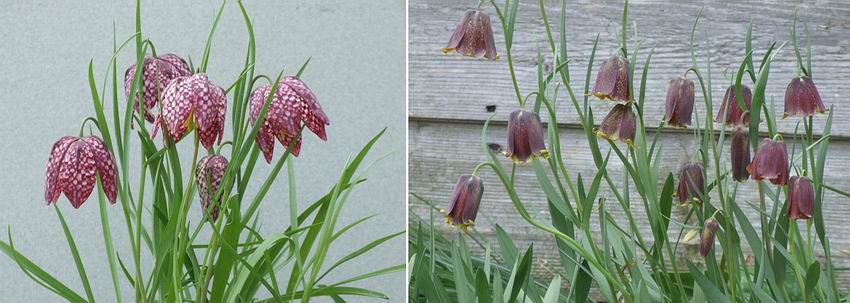
Fritillaria meleagris and pyrenaica
Among the other bulbs flowering in the garden beds are Fritillaria meleagris and pyrenaica; both excellent garden plants. In fact I find both of these species grow better in the garden as they seem to resent being grown in pots for long periods - I suspect that they dislike being too hot and drying out too much in the summer months.
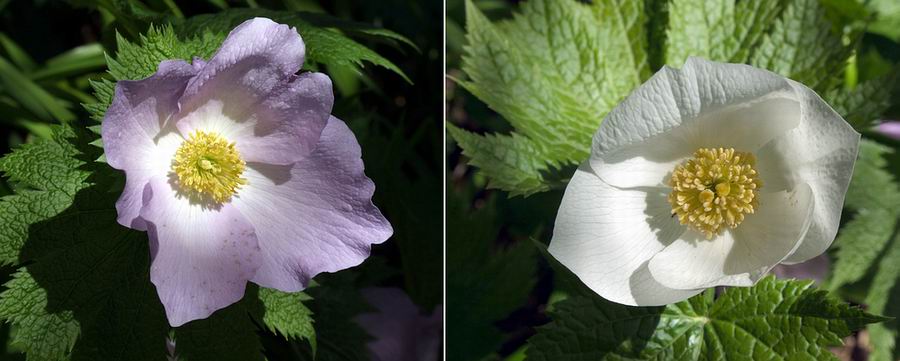
Glaucidium palmatum
Our Glaucidium palmatum are just coming into flower. We have lots of the purple ones in varying shades as they are seed raised. I am very pleased to have the white form back in the garden again after we lost our original plant in a territorial battle with a large rhododendron - it was simply over grown and we should have moved it before it died.
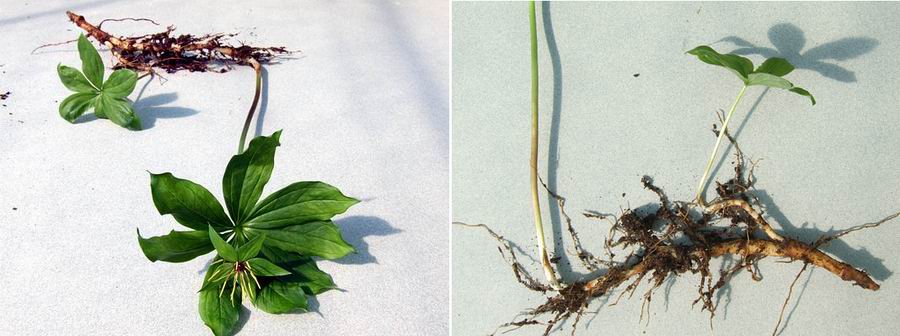
Paris rhizome x2
Having learnt that lesson I lifted this Paris which was also disappearing fast under a rhododendron as it puts on its annual growth. This also refers back to a topic from a recent log when I say the best time to shift a plant is when you remember because if I left the Paris until it dies back a bit I will probably forget and then it is liable to die out as the light and moisture are all taken by the rhododendron. Lifting when they are in full flower also allows me to get some nice pictures which illustrate the growth structure of a Paris plant. The creeping rhizome explains why we get small plants forming a short distance from the main flowering stem and after a few years we do not have a clump of Paris but a line of them. I replanted them in a bed that had been taken over by Dicentra spectabilis which thrived in the deep humus rich compost and was starting to dominate the smaller plants which were just starting to suffer from this uneven contest. We carefully removed all the Dicentra we could without disturb
ing the other smaller plants and have now planted the Paris beside a companion species.
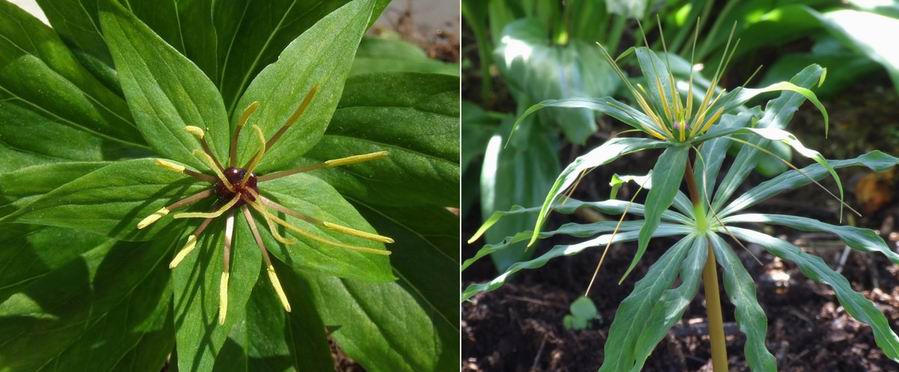
Paris polyphylla x2
One I am sure is Paris polyphylla, I am not sure what the other species is; we grew them from seed just distributed as Paris sp. maybe some one out there can help me put a name to them.
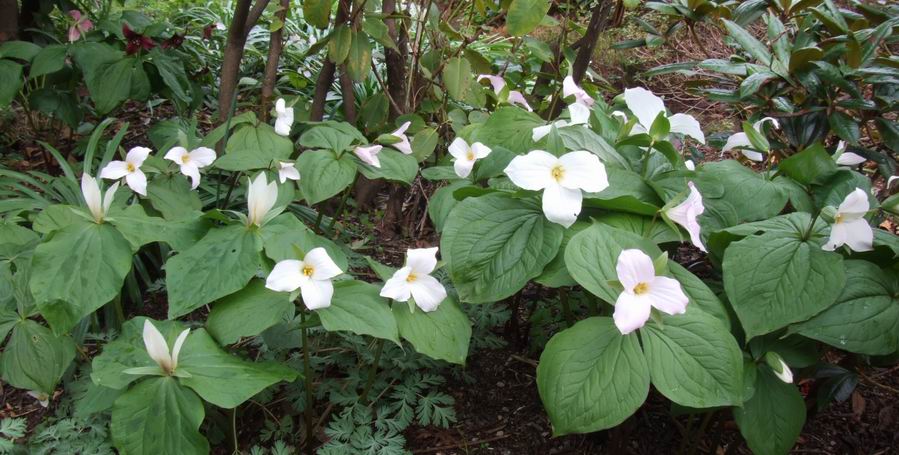
Trillium grandiflorum planting
The Trillium grandiflorum planting that I made from the pink flushed seedlings is maturing nicely now with many plants having two or three stems.
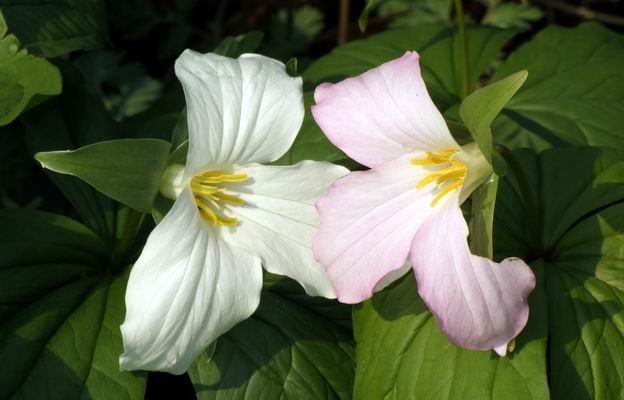
Trillium grandiflorum pink and white
It is nice to see the pink and white forms growing together, each one compliments the other.
^ back to the top ^
|

